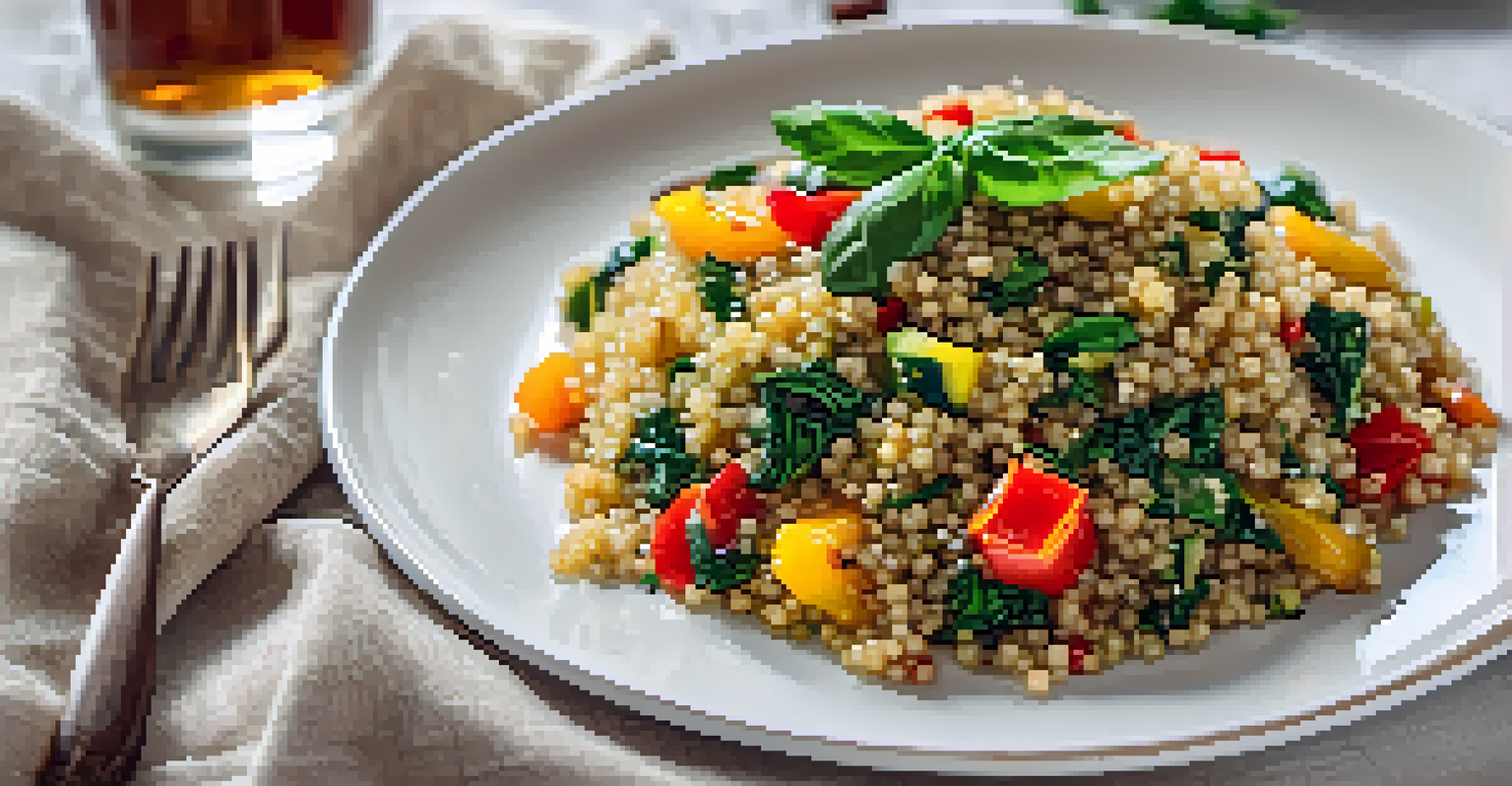Raw vs. Cooked Foods: Nutrient Availability Explained

What Are Raw and Cooked Foods?
Raw foods are those that have not been heated above 118°F (48°C), retaining their natural enzymes and nutrients. Examples include fresh fruits, vegetables, nuts, and seeds. Cooked foods, on the other hand, are prepared through various cooking methods like boiling, grilling, and baking, often altering their nutrient profiles.
Let food be thy medicine and medicine be thy food.
The choice between raw and cooked foods can significantly impact health and nutrition. Some people advocate for a raw food diet, believing it preserves all the essential nutrients. Others prefer cooked foods, arguing that cooking can enhance flavor and digestibility.
Related Resource
Understanding the differences between these two categories is the first step in exploring how they affect nutrient availability. Both raw and cooked foods can play important roles in a balanced diet, depending on individual preferences and nutritional needs.
Nutrient Availability: What Does It Mean?
Nutrient availability refers to the extent to which nutrients in food can be absorbed and utilized by the body. This concept is crucial because it affects how effectively our bodies can use the vitamins and minerals we consume. Essentially, just because a food has nutrients doesn't mean our bodies can access them easily.

Factors such as food preparation, cooking methods, and even the food's variety influence nutrient availability. For example, some nutrients like vitamin C are sensitive to heat, while others, like lycopene in tomatoes, become more accessible when cooked. Understanding these dynamics helps us make informed dietary choices.
Raw vs. Cooked Foods Explained
Raw foods retain more natural nutrients, while cooking can enhance the bioavailability of certain nutrients.
In the grand scheme of nutrition, nutrient availability is a key factor that determines the overall health benefits we derive from our food. Both raw and cooked foods contribute to our nutrient intake, but their bioavailability can vary significantly.
Benefits of Eating Raw Foods
Raw foods are often praised for their high enzyme content, which can aid in digestion and promote overall gut health. Enzymes are proteins that catalyze biochemical reactions, and consuming them from raw foods may help our bodies process nutrients more effectively. This is one reason why many people feel energized after eating fresh salads or smoothies.
The food you eat can either be the safest and most powerful form of medicine or the slowest form of poison.
Additionally, raw foods tend to retain more water-soluble vitamins, especially vitamin C and B vitamins, which can be diminished through cooking. Eating a diet rich in raw fruits and vegetables can boost your intake of these essential nutrients. For instance, snacking on bell peppers or oranges provides a refreshing and nutrient-dense option.
Related Resource
Moreover, raw foods can be incredibly versatile and satisfying. From vibrant salads to delicious raw energy bars, there are countless ways to enjoy these nutrient-packed options while keeping meals interesting and flavorful.
The Role of Cooking in Nutrient Release
Cooking can enhance the bioavailability of certain nutrients, making them easier for our bodies to absorb. For example, cooking carrots breaks down their tough cell walls, releasing more beta-carotene, a precursor to vitamin A. This means that a cooked carrot might offer more health benefits than a raw one in terms of vitamin A availability.
Heat can also help eliminate harmful bacteria and parasites, making certain foods safer to consume. This is especially true for meats and some grains, where cooking not only improves digestibility but also reduces the risk of foodborne illnesses. It’s a practical way to ensure we’re getting both nutrition and safety from our meals.
Nutrient Availability Matters
The way we prepare food affects how well our bodies can absorb essential vitamins and minerals.
In essence, while raw foods have their advantages, cooking can be a powerful tool in maximizing nutrient release. A balanced diet often includes both raw and cooked foods, allowing us to enjoy the benefits of each.
Which Nutrients Are Affected by Cooking?
Different cooking methods can impact various nutrients in food. Water-soluble vitamins, such as vitamin C and many B vitamins, tend to leach out into cooking water, especially when boiled. This is why steaming or microwaving is often recommended over boiling for preserving these sensitive nutrients.
On the flip side, some nutrients become more bioavailable through cooking. For instance, the lycopene in tomatoes is better absorbed when they are cooked, making marinara sauce a nutritious option. Understanding which nutrients are affected can help us optimize our cooking methods based on our dietary goals.
Related Resource
Incorporating a variety of cooking techniques can help us enjoy a diverse diet while maximizing nutrient intake. Whether it's roasting, steaming, or sautéing, each method has its own impact on the nutrient profile of the food.
Balancing Raw and Cooked Foods in Your Diet
Striking a balance between raw and cooked foods can lead to a more nutritionally complete diet. Incorporating a variety of both can ensure you’re getting a wide range of vitamins, minerals, and other beneficial compounds. For instance, enjoying a fresh salad alongside a warm quinoa dish can offer a rainbow of nutrients.
Additionally, personal preferences and digestive health should guide your choices. Some individuals may thrive on a predominantly raw diet, while others might find they feel better with more cooked options. Listening to your body and adapting your diet accordingly is key to long-term health.
Balance is Key for Nutrition
Incorporating both raw and cooked foods leads to a more nutritionally complete and satisfying diet.
Ultimately, the goal is to create meals that are satisfying, enjoyable, and nourishing. By understanding the benefits of raw and cooked foods, you can craft a diet that supports your well-being while tantalizing your taste buds.
Practical Tips for Maximizing Nutrient Intake
To make the most of both raw and cooked foods, consider incorporating a variety of cooking methods. Steaming vegetables, for example, can help retain their nutrients while still allowing for enhanced digestibility. Similarly, try lightly sautéing greens to make them more palatable without losing too many nutrients.
When it comes to raw foods, aim for a colorful variety. Different colors often indicate different nutrients, so a vibrant salad or fruit bowl can provide a plethora of health benefits. Think of your plate as a canvas, and aim to create a masterpiece of flavors and nutrients.

Lastly, don’t be afraid to experiment! Mixing raw and cooked components in your meals can lead to delightful combinations. For instance, topping a warm stir-fry with fresh herbs or avocado can enhance both flavor and nutrition, making every bite a little more enjoyable.